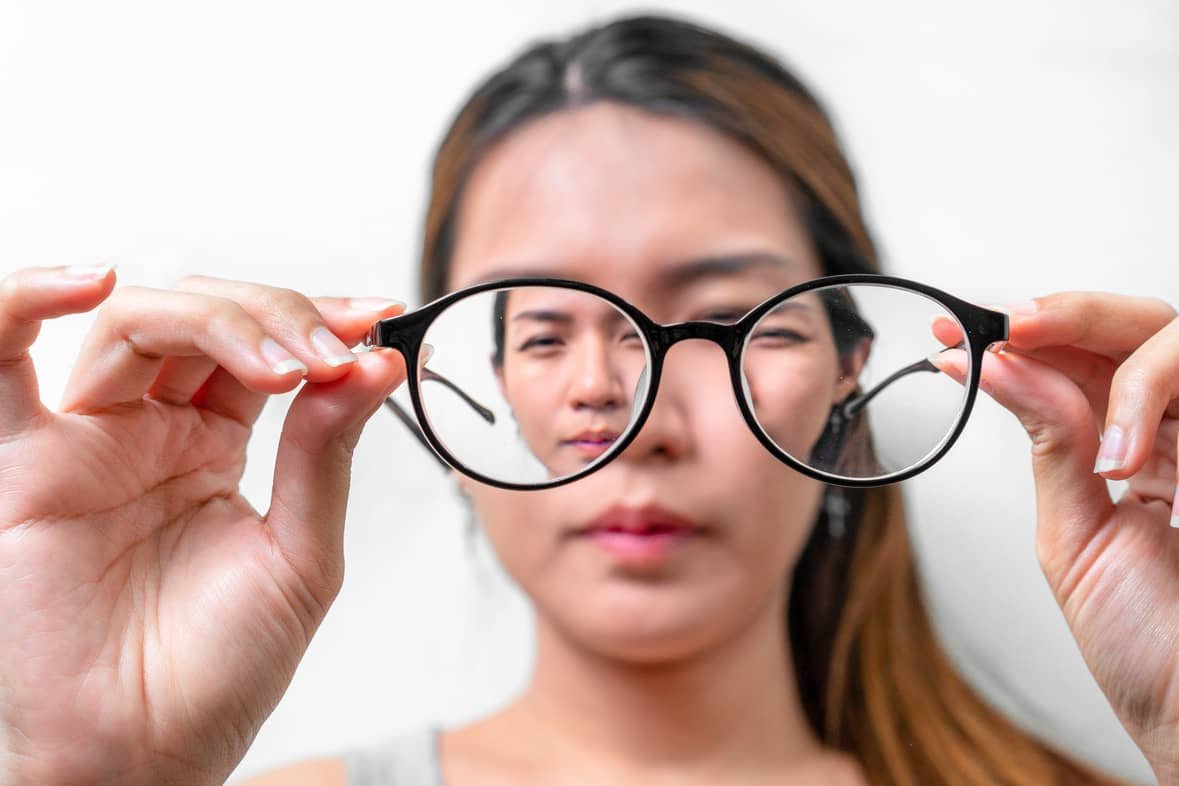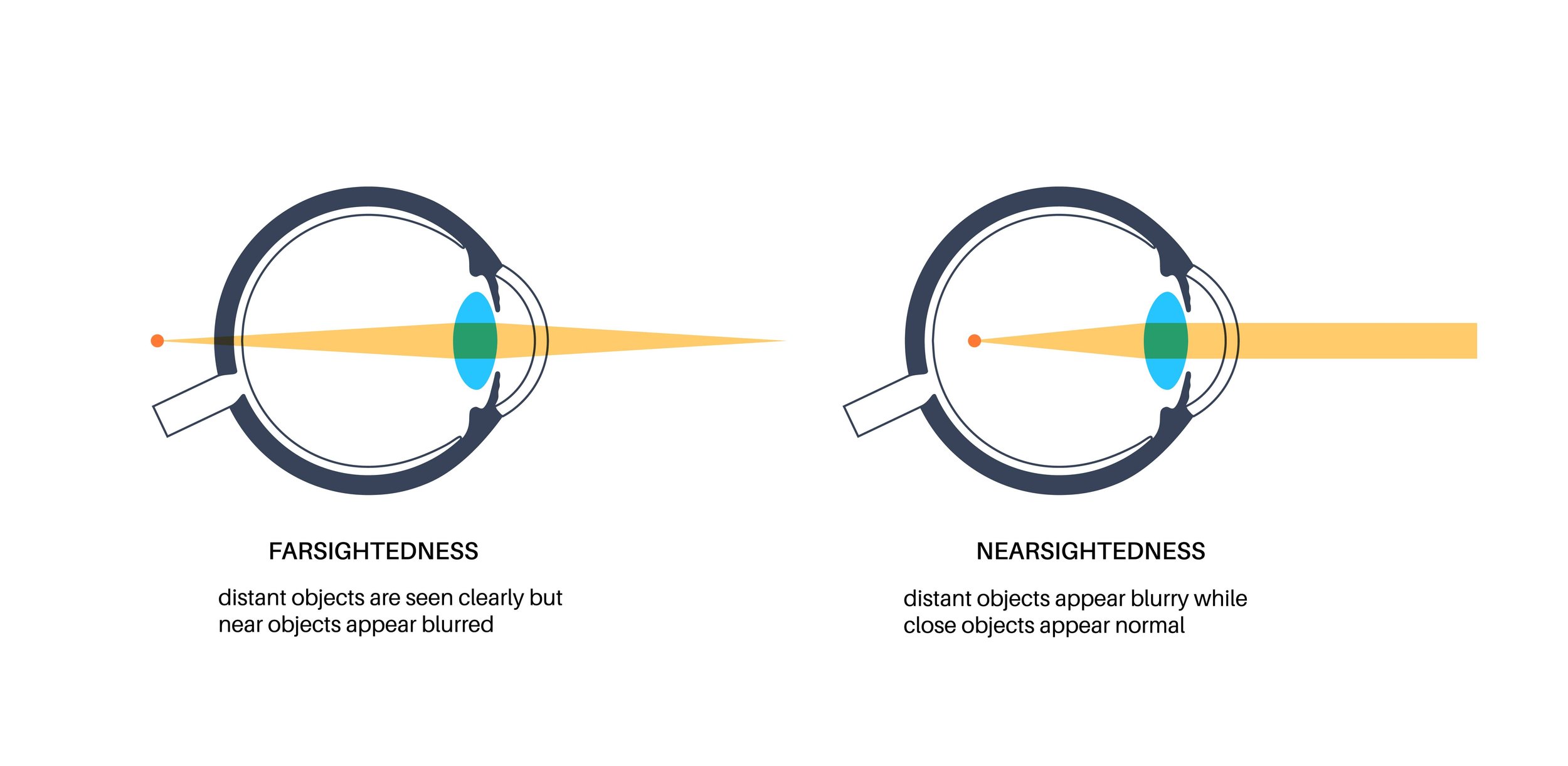Short-sightedness (Myopia) vs. Long-sightedness (Hyperopia): Key Differences to Know
People often confuse short-sighted (myopic) and long-sighted (hyperopic) vision.
Both vision conditions involve the eye's structure and length, but their treatment and symptoms differ.
Here, I'll provide a simple definition of short-sightedness and long-sightedness to make this confusing topic as easy to understand as possible. I'll also discuss the similarities between short-sightedness and long-sightedness and how these conditions are managed.
Quick Definitions: Long-Sighted and Short-Sighted Meaning
What Is Short-Sightedness (Myopia)?
Short-sightedness is a refractive error where nearby or close-up objects are clear, but distant objects are blurry.
What Is Long-Sightedness (Hyperopia)?
Long-sightedness is a refractive error where far-away objects are clear, but close-up objects are blurry.
How Refractive Errors Work
Both short-sightedness and long-sightedness are a type of refractive error. A refractive error occurs when the length of the eyeball doesn't match the eye's focusing power. This mismatch results in light being focused in the wrong place relative to the retina.
Here are the anatomical components involved in vision and how refractive errors work:
Cornea and Tear Film: The cornea is the clear tissue that covers the front of the eye. The tear film is a thin layer of liquid over the cornea that protects and lubricates the eye. When light enters the eye, it first passes through the cornea and tear film. The cornea's curvature affects how light is refracted. The cornea has a large effect, focusing the light as it enters the eye.
The Crystalline Lens: The crystalline lens is situated behind the iris and contributes about one-third of the refractive power. The lens can flex and change shape to bring nearer objects into focus. This is a process called accommodation, which diminishes as we get older. Hyperopia tends to manifest as we age, as it becomes more challenging to accommodate and compensate for longsightedness (hyperopia).
Axial Length: An eye without refractive error has an average axial length of approximately 23.5mm.In short-sighted (myopic) eyes, the length of the eye is usually longer relative to its refractive power. This mismatch causes light to focus in front of the retina (in a long eye, the retina is shifted backwards). In long-sightedness (hyperopia), the length of the eye is relatively short. This causes light to focus behind the retina instead of directly on it (in a short eye, the retina is shifted forward).
Refractive errors can be easily corrected. Myopia treatment can help manage near-sightedness and help slow the progression of myopia.
Learn more about short-sightedness causes and management here: What Causes Short-sightedness: Reasons for Myopia.
Differences Between Myopia vs Hyperopia
The biggest difference between short-sightedness (myopia) and long-sightedness (hyperopia) is the eye's axial length and how objects focus, either in front of or behind the retina. In long-sightedness (hyperopia), the axial length of the eye is too short, whereas in individuals with near-sightedness (myopia), it is too long.
Short-sighted (myopic) individuals see nearby objects more clearly than distant objects.
Myopia makes it more challenging to perform distance activities like driving or sports. In myopia, it is not possible to compensate or relax the eye's focus and "push" our focus away from us to make distance objects clearer.
Long-sighted (hyperopic) individuals find it easier to see objects in the distance clearly, but near objects may appear blurred. Hyperopia makes it challenging to perform near-vision activities like working on a laptop, reading, sewing, or watching TV. This is because additional focusing effort is required to compensate for the level of longsightedness (hyperopia).
| Short-Sightedness | Long-Sightedness | |
|---|---|---|
| Medical Term | Myopia | Hyperopia |
| Axial Length | Longer than average | Shorter than average |
| Vision Clarity | Near-vision objects are clear, but distance vision is blurry | Distant vision is clear, but near objects are blurry |
| Focusing Point Inside the Eye | Light focuses too far in front of the retina | Light focuses too far behind the retina |
| Correction Needed | Negative power lenses (-) | Positive power lenses (+) |
| Progression | Can progressively worsen through adolescence; reading glasses may also be required later in life as the gradual loss of focusing power sets in and near vision becomes difficult (presbyopia). | Generally stable; may improve as the eye develops up to the early teens. |
| Cause | Unknown involves a complex interaction between environmental, genetic and race-related factors. A child is three times more likely to have myopia if one parent is myopic and six times more likely if both parents are myopic. | Most far-sighted individuals are born with it and become more aware of symptoms with increased near work through school years and into careers with greater near and screen-based demands. |
Similarities Between Short-Sightedness vs Long-Sightedness
Short-sightedness and long-sightedness are in many ways opposite, but they do share a few similarities:
Both myopia and hyperopia involve refractive errors.
Both conditions involve the eye's axial length relative to where light focuses on the retina.
Myopia and hyperopia both involve how the eye focuses light
Both conditions can progressively worsen
Myopia and hyperopia can involve similar symptoms, such as eye strain, eye fatigue, and headaches
Both conditions can be easily corrected with various spectacle and contact solutions.
How to Manage Myopia vs Hyperopia
I hope this clarifies the meaning of short-sightedness and long-sightedness. Myopia management and hyperopia control both involve corrective lenses. However, the lens power is different.
Myopia control involves negative power lenses (-) that make distance vision clearer, while hyperopia management requires positive power corrective lenses (+).
Hyperopia management helps make near-vision activities, such as reading, clearer. Myopia control helps make it easier to see distant objects clearly without eye strain.
Given that vision changes are common during adolescence, regular eye exams are crucial for early detection and correction of vision issues. This is especially important for catching myopia early.
Whether you have myopia or hyperopia, modern lens technologies feature advanced technology that easily compensates for these common vision issues, giving you the reassurance and confidence to manage your vision effectively.
From prescribed sunglasses to spectacle or contact lenses, we can tailor a vision solution that matches your needs and allows you to enjoy the freedom and quality of life you expect.
We provide many myopia control services, including comprehensive eye tests and customised vision treatment plans.
Please book an appointment with our caring team of optometrists and take the first step toward your best vision. We are here to support and guide you in your journey to better vision.
FAQs
How do I know if I am short-sighted or long-sighted?
If you are short-sighted, you may notice symptoms such as eye strain, headaches, fatigue, and blurry distance vision.
If you are long-sighted, you may experience headaches, eye fatigue, eye strain, and difficulty seeing up close objects.
If you notice that distant objects suddenly seem blurry or you start needing to hold books closer to be able to read them, schedule an appointment with an optometrist.
A comprehensive vision evaluation is the only way to know if you are short-sighted or long-sighted.
Can short-sightedness and long-sightedness occur together?
We expect symmetry with most parts of the body that occur in pairs, for example, feet, hands, ears, etc. However, things may be different. It is possible to be short-sighted (myopic) in one eye and long-sighted (hyperopic) in the other. When this occurs, the condition is called antimetropia.
Can long-sightedness or short-sightedness be corrected?
Yes, both long-sightedness and short-sightedness can be easily managed. There are a variety of effective options for managing hyperopia and myopia, including prescription glasses or contact lenses.


